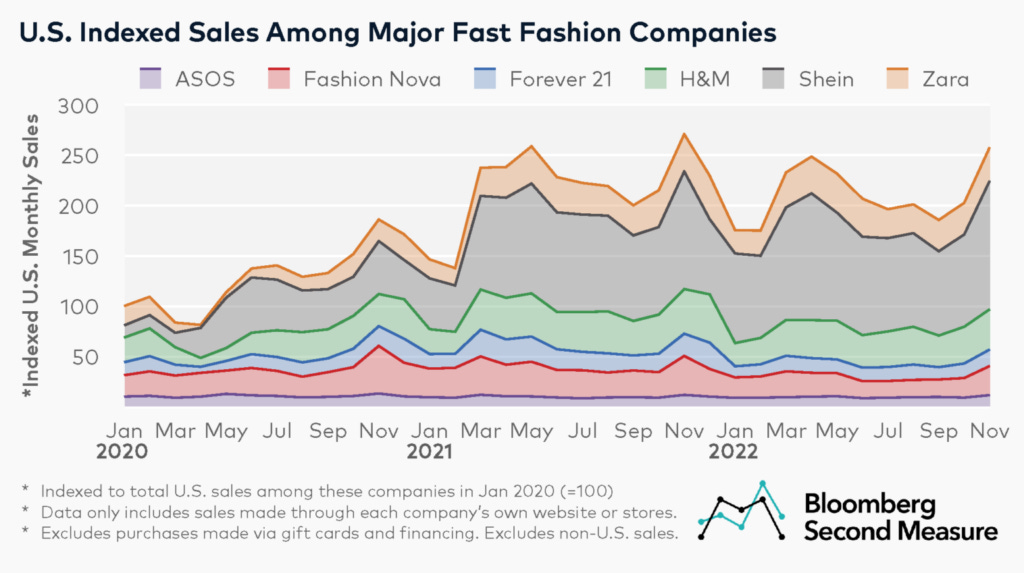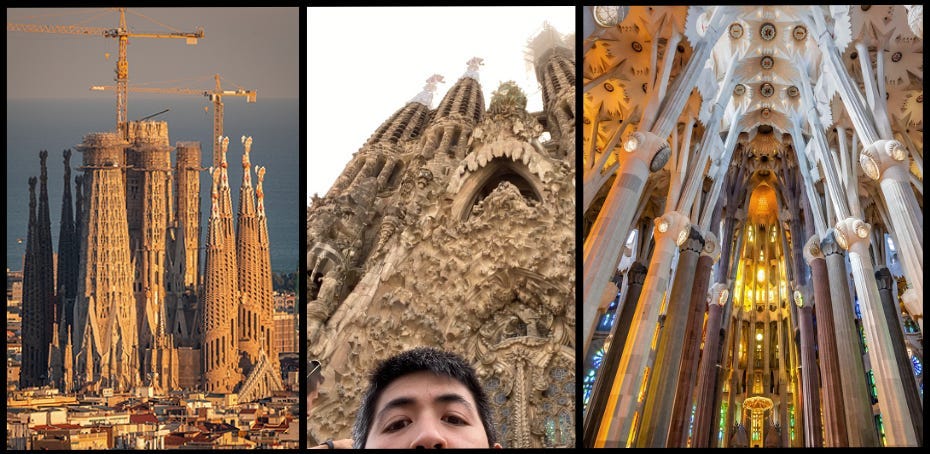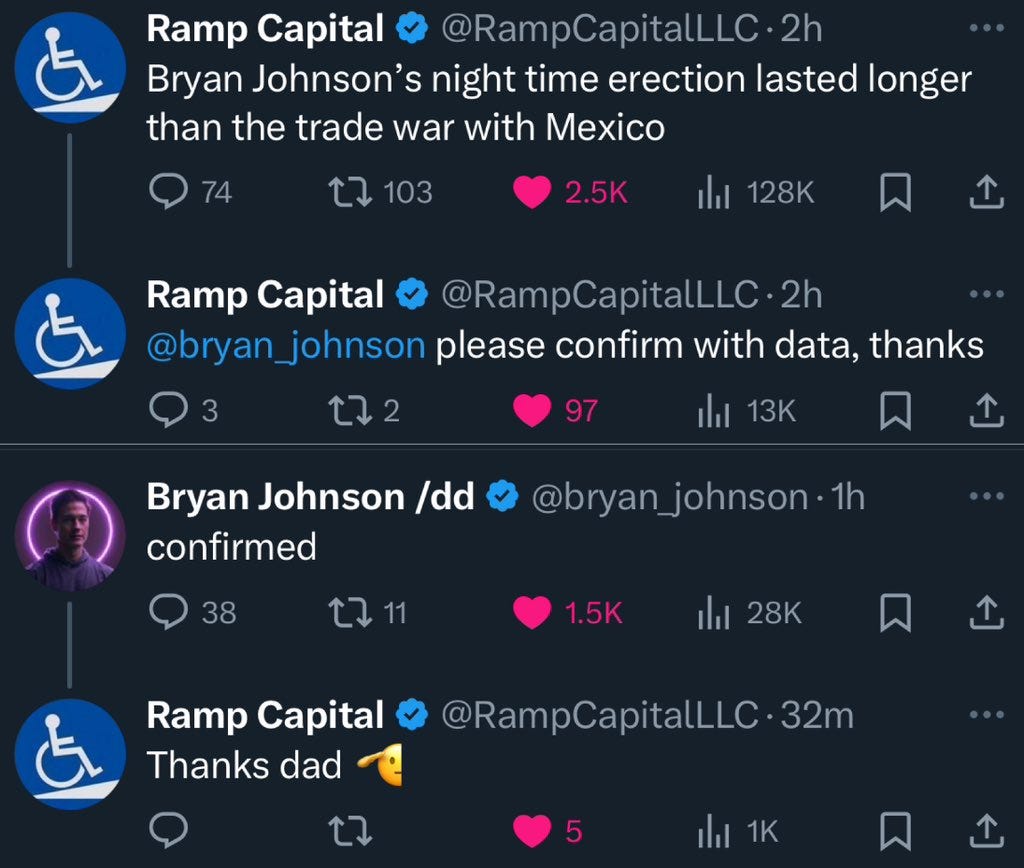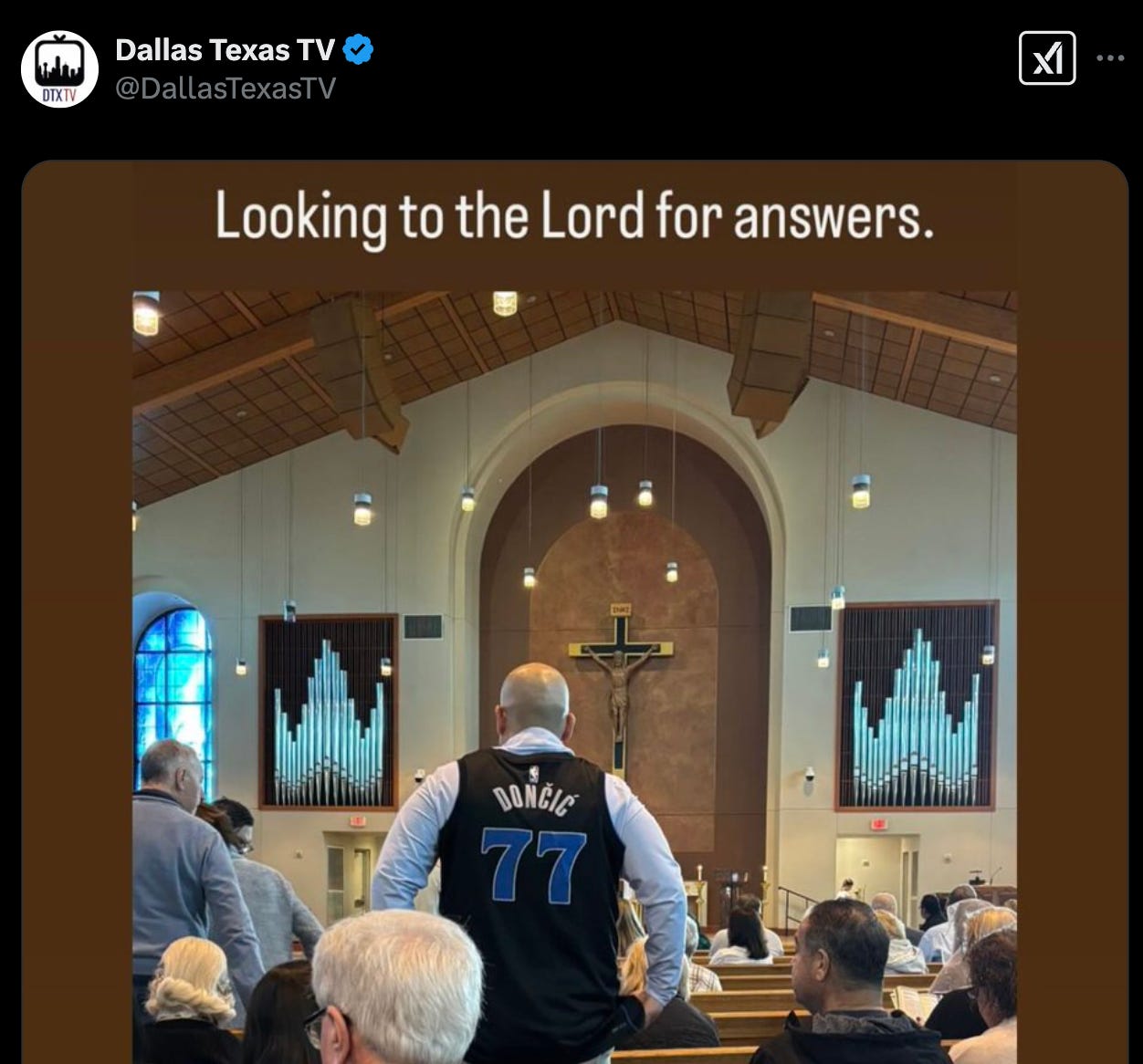Tariff Engineering, Explained
PLUS: The Year of Kendrick, Temu and SHEIN Clapped, Luka Doncic Trade.
Thanks for subscribing to SatPost.
Today, we are talking about the wild arts of tariff engineering.
Also this week:
SHEIN and Temu Clapped
The Year of Kendrick Lamar
…and them fire memes (including Luka Doncic)
There’s been a lot of tariff news in the … errr … news lately.
Everything is moving so fast that I had to update my LinkedIn profile:
But today’s piece is going to ignore the current news cycle and talk about one of my favourite random international trade topics: tariff engineering, which is when manufacturers slightly adjust a product so it qualifies for a lower import duty.
Have you ever owned Converse Chuck Taylors? Somehow, these shoes — which are a guaranteed ankle sprain when you play pick-up basketball — used to be worn by NBA players.
They are stylish though. And depending on where you bought your Chuck Taylor shoes, there may be a fuzzy felt fabric that covers more than half of the sole. Why? It has to do with how duties are paid on products imported to America.
The import classification for footwear is based on the type of materials used on the upper part of the shoe and the bottom sole. One formal classification reads “with uppers of vegetable fibers and having outer soles with textile materials having the greatest surface area in contact with the ground.”
In the case of Nike-owned Converse, the felt fabric has the “the greatest surface area in contact with the ground”. Consequently, the shoe qualifies for a similar duty rate as house slippers (<7.5%) — which are def fuzzy AF — whereas rubber-sole shoes have a much higher tariff rate (37.5%+).
This is one example of a larger system called the Harmonized Tariff Schedule which has over 10,000 different codes (each assigned a 10-digit classification number) for various imported goods.
Converse isn’t the only shoe manufacturer to adjust its product to qualify for a lower duty. The practice has annoyed domestic footwear companies for ages. They complained that the felt fabric was just a hack that would quickly wear off. However, since the early 2000s, the US government ruled that such tariff-engineered footwear are a “commercial reality” and the customers typically wear them as they were designed and imported.
As the Converse example shows, it is perfectly legal to do “tariff engineering” as long as the importer:
follows the rules in the Harmonized Tariff Schedule
and doesn’t modify a product for a lower duty, then just change the product once it is in the country (this does happen and the government has levied fines)
Anyway, I posted this Converse tariff engineering story a few years ago on X and my replies filled with a ton of interesting examples.
The most-shared one involved a tariff war that affected the design of pick-up trucks and created what is known as “The Chicken Tax”. So, back in the 1960s, American poultry producers went wild and chicken — which was once a luxury (but now is now breaded, deep-fried and shoved down every orifice of our body) — became a food staple.
There was a ton of excess American chicken that was exported to Europe and overwhelmed those markets. Local poultry farmers in Germany and France complained that prices for their product were collapsing. In response, those European governments levied a tariff on American chickens. President Lyndon B. Johnson returned the favour by placing a 25% tariff on “light trucks” along with European potato starch, dextrin and brandy. Johnson’s truck tariff was targeted at Germany, specifically the country’s very popular Volkswagen cargo vans and pick-up trucks.
This 25% tariff basically wiped out European light truck imports into America. When the trade war ended a few years later, the tariffs on European food items were cancelled but the 25% truck tariff remained and it became known as “The Chicken Tax” in America. Over the decades, car manufacturers have “engineered” their vehicles to circumvent the tariff:
Subaru BRAT: Between 1978 and 1987, Subaru sold a pick-up utility truck with a twist. It welded two rear-facing seats in the cargo bed and placed carpeting on the floor. This tomfoolery allowed the vehicle to be classified as a passenger vehicle and subject to only a 2.5% tariff rate. Don’t hate the player, hate the game!!!
Ford Transit Connect: In 2010, Ford started importing its Transit Connect truck — which were manufactured in Turkey — to America. In an attempt to qualify for the lower passenger vehicle duty rate, Ford put windows and seats in the back of the Van. When the vehicle hit stateside, the seats were stripped out and the glass was replaced with panels before being sold as a van. Sounds like Ford was trying to skirt the rules. And, sure enough, the US government closed the loophole in 2019. Ford was still able to import the Connect as a passenger vehicle but had to change its vehicle conversion process (and the car manufacturer eventually discontinued the product in 2023).
Other notable examples of tariff engineering include:
Columbia Sportswear: Women’s garments with “pockets below the waist” have a lower duty than a normal shirt, so Columbia designs tiny pockets near the waist line — called a “nurse pocket” — and pays a a lower duty (Marketplace has an insightful article on this topic).
Marvel Toys: Dolls are charged a higher duty than other types of toys. In the Harmonized Tariff Schedule, only human-looking items can be classified as “dolls”. Lawyers for Marvel sniffed out a loophole and argued that the comic publisher owned mutant characters that were not humans and thus subject to lower duty for toys as opposed to the higher duty for dolls. The full case took a decade-ish to play out and covered ~80 Marvel characters. Ultimately, the court agreed that some Marvel characters (Beast, Wolverine, Fantastic 4 etc.) were not “human” and allowed the lower duty rate. Just bonkers. While researching this topic, a Reddit commenter noted that classifying mutants as non-humans was “the exact sort of thing that pissed off Magneto”, which is both hilarious and true (the Radiolab spoke with the Marvel lawyers in one of their episodes).
There are also some solid stories of companies trying to tariff engineer their way into European markets.
Sony has a few interesting examples.
First was digital cameras: “When digital still cameras became viable for video production, the manufacturers (Sony, Canon, etc) gave them recording limits of 29 minutes 59 seconds. Why? Because if they can record for 30 minutes, they're classed as movie cameras and taxed at a higher rate than still cameras.”
Another Sony example is the PlayStation. Sony tried to sell the gaming machine with a keyboard and Linux CD to classify the product as a computer, which had a lower import tariff than gaming console. Europe told Sony to kick rocks. Valiant attempt, though.
Circling back to America, let’s ask an obvious question: what was the very first example of engineering?
The hijinks began with sugar imports at the end of the 19th century, per an article by Thomson Reuters / Tax & Accounting:
In 1881, the [America] tariff code provided different rates of duty for sugar of different grades, determined by color. In one famous instance, Customs believed that the importer intentionally colored sugar with molasses, lowering the grade to avoid higher duties. Customs conducted a chemical analysis and determined that the sugar was a higher grade than its color indicated. The US Supreme Court held that manufacturing sugar with a dark color to evade duties was permitted, because Congress had adopted the color test, not a chemical test for sugar classification. The Court recognized that an importer could configure merchandise to achieve the lowest rate of duty “so long as no deception was practiced”.
Fascinating.
Another example from the 19th century I enjoy involves tomatoes and helps to explain why I spent the first 1/3rd of my life thinking this food item was a vegetable (it's a fruit because fruits contain seeds). In 1893, the Supreme Court ruled that tomatoes should be classified as a vegetable for tariff purposes because even though “botanically” a fruit, people usually eat them as part of a main course, rather than dessert. President Reagan also tried to keep the farce going by proposing that ketchup count as a vegetable for the purpose of funding national school lunches (but eventually withdrew this awful idea).
Fast forward to the 1990s and sugar came up again in another Supreme Court case. But the result was different than the 1880s case and an example of tariff engineering gone wrong: an importer was found to have run afoul of the rules and “manufactured a fictional or temporary product”.
TLDR: To avoid tariffs on raw sugar imports, Canadian refiner Heartland-By-Products mixed molasses with sugar to create a syrup. The product entered America at a lower duty rate than just raw sugar. Then, the refiner separated the sugar from the molasses and re-sold the raw product. It then sent the molasses back to Canada and ran the same sketchy playbook over and over again.
After several court rulings, a judge ruled against Heartland-By-Products — and in agreement with US Customs — by concluding “that the only purpose of the strange [mixing] arrangement was to create a fictitious product that, because of the temporary presence of molasses, qualified for the lower rate of duty on sugar imports.”
Absolutely bodied.
Let’s wrap this topic up with my favourite attempt at tariff engineering. It's from that incredible episode of Nathan For You when Nathan Fielder created a smoke detector product and tried to avoid import duties by re-classifying it as a musical instrument (and doing so by creating a hit song).
Comedy ensues. Give it a watch and then feel free to update the skills section of your LinkedIn: “Expert, Tariff Engineering”.
Temu and Shein
Actually, let’s talk about one bit of recent tariff news.
Last Saturday, President Trump announced a 10% tariff on Chinese imports while China reciprocated with a 15% tariff on various US goods. As part of his executive order, Trump also put an end to a tariff loophole known as “de minimis”, which is Latin for “of little importance”. The “de minimis” rule was part of the US Tariff Act of 1930 and exempted low-value items from import duties. The original exemption was for any product under $5. The threshold was raised to $200 in the 1990s and then to $800 in 2016.
Literally as I'm writing this section, Trump has paused his executive order on ending the “de minimis” exemption until Customs can figure out a way to implement it. This is why I didn't want to write about the news cycle but I’m doing it for my baller readers.
It's still an interesting subject and my guess — since my LinkedIn says I'm an expert in international trade — is that the loophole will ultimately be closed, so let's walk through the issue.
Between 2016 to 2024, the value of “de minimis” imports into America spiked from $9B to $55B, with ~60% of the shipments coming from China per Marketplace Pulse. In 2024, the number of “de minimis” packages totalled 1.4B items, almost a 10x increase from when the threshold was raised to $800.
Two of the largest Chinese exporters of these items are SHEIN (clothing) and Temu (absolute dollar-store junk like $5 USB toasters that nobody really needs except for that one time I bought it as a joke to gift to my wife and she told me to never do that again). These companies pay basically zero import duties on their products. As a point of comparison, Gap paid ~$700m on import taxes in 2022 (while Swedish fast fashion firm H&M paid $200m) per Melissa Chen in The Free Press.
This massive cost advantage — along with billions of dollars of ad spend on Facebook (SHEIN and Temu contributed ~5% of the social platform’s revenue in recent years) — allowed the two Chinese e-commerce firms to build huge market share. SHEIN is now the top fast-fashion brand in America and the global revenues for each of these firms is over $50B. The competition is so fierce that Amazon was forced to launch a brand for cheap crap called Amazon Shit You Don't Need Haul.
The “de minimis” rule change will even the competitive playing field for American companies and may spur more domestic entrepreneurship. The EU is following America's lead and just announced it is tightening checks on Temu and SHEIN shipments.
Temu is owned by Chinese e-commerce giant PDD and is in a better position to handle the new landscape. The company has already started shipping its items in bulk packages to overseas warehouses, which then deliver the product to the end customer (Temu is also re-directing American app users to products that can be delivered domestically). This model takes longer but customer are willing to wait for such complete and utter crap knick knacks.
SHEIN is more reliant on speed to capitalize on trending fashion and will have to re-adjust. It was prepping a £50billion IPO in London prior to the Trump's executive order and will have to go back to the drawing board on valuation.
Aside from the $800 threshold, there is another component to the “de minimis” rule that is worth flagging: customs inspections. Part of the exemption’s rationale is that there are only so many packages that customs can check. A birthday card from grandma doesn’t need a pat-down search.
Many of these Temu and SHEIN products probably wouldn't pass American health and environmental regulations. But customs just ignored them anyways. Also, over the past decade, a lot of fentanyl and chemical precursors have also been shipped from China to America without having to worry about being vetted. Trump’s pause on the executive order is partly because of how to actually screen all these goods and the first question that comes to mind for me is “can new AI-powered technology potentially aid this process?”
More broadly, the rule change will lead to collateral damage outside of just Temu and SHEIN. A lot of small US businesses relied on inexpensive Chinese good, whether of manufacturing or general retail. The US Postal Service briefly paused all Chinese imports earlier in the week and a ton of confusion ensued. Other developments markets also took advantage of the “de minimis” rules. Looks like everyone — including my planned USB air fryer startup — will have to re-work some supply chains soon.
La Sagrada Familia
The Caffeinated Deep Dives podcast just dropped the 6th episode on the history of Antoni Gaudi and La Sagrada Familia including (Apple, Spotify, YouTube):
Antoni Gaudi's Life and Influences
Guadi's Engineering Genius
La Sagrada Familia Survives War
Etsuro Sotoo: The Japanese Gaudi
Modern Construction of La Sagrada Familia
Still remains the coolest piece of architecture that I've ever seen (had to take this incredible photo of my nostrils below).
Anyways, here are the other Caffeinated Deep Dive episodes:
Year of Kendrick Lamar
Man, Kendrick Lamar has been on a seemingly non-stop heater.
The 37-year old Pulitzer-winning rap superduperstar won a bunch of Grammy awards for his Drake diss track “Not Like Us”. Even Beyonce and Taylor Swift were dancing to the song as Kendrick walked on stage to accept his award (the entire crowd singing “A- Minnnnnnnnoooooooor”!!!). Kendrick was wearing a denim top and bottom aka “A Canadian Tuxedo” to really into the Drake troll.
As if that wasn’t enough, Kendrick will be headlining the Super Bowl halftime show this weekend. Joe Pompliano has a great breakdown of the economics for Kendrick’s show. The rapper will effectively be paid nothing by the NFL but benefit massively from the 100m+ eyeballs watching his ~14 minute set:
Here’s how it works: Apple Music pays the NFL $50 million to sponsor the halftime show. The NFL keeps about $35 million of that money, passing along the remaining $15 million to that year’s artist. That $15 million is then used as a production budget for the show, including everything from set design and dancers to 3,000 part-time workers, security, and marketing. Some artists even go over budget, like The Weeknd, who spent an additional $7 million of his own money on the halftime show in 2021.
The Weeknd felt comfortable spending so much of his own money because he knew it would pay dividends on the back end. If a 30-second commercial is worth $8 million this year, how much is a 12- to 14-minute uninterrupted performance worth? […]
So, how does Kendrick Lamar plan to capitalize this year? Well, a few ways. For starters, Kendrick will almost definitely play his recent Grammy winner (and Drake diss track) “Not Like Us” as part of his 10- to 15-track setlist. Kendrick also has a 23-show North American tour starting April 19th at U.S. Bank Stadium in Minneapolis.
Kendrick has already started selling tickets for this tour, but you’ll see a headline over the next few days bragging about increased interest and higher prices. American singer-songwriter SZA will be a special guest during this year’s halftime show, which was intentional, as she will co-headline Kendrick’s multi-month tour later this year.
Apple Music will help promote Kendrick’s music on its app, including a selection of music on the home screen and over 100 hours of live programming on Apple Music Radio. Kendrick also has a comedy movie coming out in July that he is producing with South Park creators Trey Parker and Matt Stone, and the 37-year-old will probably finish the weekend with several million more followers on Instagram, as Kendrick will soon be the first solo rap artist in history to headline the Super Bowl halftime show.
I’m still hoping Kendrick squashes the beef with Drake and brings him on stage with L’il Wayne (the Super Bowl is in New Orleans after all). But it’s probably more likely that Taylor Swift will make a cameo since she’s there watching her BF Travis Kelce. If either cameo happens, I will 100% pass out from the memes.
Here are two more Kendrick links for your weekend consumption.
Justin Charity dropped a 90-minute podcast detailing the entire history of the Drake vs. Kendrick beef, which dates back years.
Finally, Kendrick Lamar went on the Howard Stern show in 2017 and told the story of how Dr. Dre “discovered” him. It’s very good.
In 2010, people in Dre's camp had heard Kendrick's music and seen a YouTube video. Dre loved it and tried calling Kendrick. He thought it was a prank and hung up on Dre. Eventually, Dre invited Kendrick to his studio and wanted to make sure Kendrick was the one making his music. Dre gave him a beat and asked Kendrick to write a song. Kendrick delivered the goods and says he knew at that moment that he had "arrived". The rapper signs with Dre's Aftermath and the rest is history.
When Howard Stern asks Kendrick how the introduction was made, Kendrick says "A lot of work prior to that makes the introduction. I put out a lot of material. Mix tapes, demos. You never know how far your music will go." That’s an internet-age discovery story right there. Create art and put it out in the world. You never know who’s watching, listening or reading.
This issue is brought to you by Bearly AI
Why are you seeing this ad?
Because I wasn’t able to buy a Super Bowl ad. I was about $7,999,900 short for the 30-second TV spot.
In the meanwhile, I co-founded an AI-powered research app called Bearly AI that can save you and your team hours of work with AI-powered tools for reading (instant summaries), writing (GPT-4o, Claude Opus 200K, Grok, Gemini) and speech-to-text transcription tools (Scribe, Whisper).
It’s all available in one keyboard shortcut (and an iPhone app). Use code BEARLY1 for a FREE month of the Pro Plan.
Links and Memes
Some other baller links:
British mobile operator 02 created an AI voice bot called “Daisy” to combat phone scammers by wasting their time with a bunch of random chatter about knitting, cooking and complaining about how she can’t use technology. It’s glorious and may be the best application of generative AI to date.
Theo Von describing how he met Conor McGregor will put you in tears
How Telegram founder Pavel Durov was arrested in France and what it could mean for the messaging platform via Wired.
OpenAI’s recent releases include an AI agent that takes over your computer (Operator) and a tool that can crank out PhD-level research reports (Deep Research). Wharton professor Ethan Mollick has a great breakdown on the tools.
Did DeepSeek affect Big Tech? Last week, we talked all things DeepSeek, the Chinese open-weight model that showed serious efficiency gains. Nvidia and semiconductor investors were concerned that the breakthroughs might lead to less chip purchases…NOT JUST YET!! Amazon and Google announced higher AI infrastructure spend to $100B and $75B, respectively.
…and them fire posts:
Finally, absolute meme madness last week when the Dallas Mavericks uber-SuperDuperDuperStar Luka Doncic was traded to the LA Lakers for superstar (but not uber-SuperDuperDuperStar) Anthony Davis.
It was the most shocking trade I can remember. Seems that the vast majority of sports media feels the seem way and most also agree that Dallas made a bad deal. Especially since the Dallas GM Nico Harrison didn’t shop Luka and only negotiated with LA.
This was the most short-sighted trade since that time in high school I gave my brother the rights to my entire trick-or-treat haul the next Halloween in exchange for one full-size Snickers bar (worth it tbh).
The Luka trade was so crazy that leading ESPN analyst Shams Charania initially thought it was a prank when someone texted him the details. Then, when he posted the news on X, everyone in the NBA world thought he got hacked (and he had to post a secondary tweet to make it clear the news was real).
NBA stars lost their minds (Kansas City Chiefs quarterback Patrick Mahomes is a huge Mavs fan and also got in on the action).
Harrison orchestrated the trade with LA Lakers GM Rob Pelinka. The Dallas GM previously worked at Nike from 2002 to 2021 and was the shoemaker’s point man for Kobe Bryant. Pelinka was Bryant’s agent. Harrison and Pelinka have a close relationship and competing GMs are pretty annoyed because they believe they could have offered a better trade for Doncic — a generational basket asset — if given the chance.
Since the trade didn’t fully pass the smell test from a basketball standpoint, many theories are popping up with a business rationale.
In December 2023, Mark Cuban sold a controlling 72% interest in the Dallas Mavericks to Miriam Adelson for $3.5B. Adelson’s late husband Sheldon owned Las Vegas Sands, which has massive casino operations in Las Vegas and Macau. That context lays the foundation for a very viral theory summarized nicely by Barstool Sports:
TLDR: Dallas Mavericks new ownership does not care about basketball, and only bought the team in hopes of building a destination resort casino in America's largest untapped gambling market — The Dallas-Fort Worth area.
In order to do that, they need legislation passed in Texas to legalize casinos, sports gambling, etc., but they've had a terrible time trying to get that done.
They believe they can force Texas' hand by threatening to move the Dallas Mavericks franchise to Las Vegas, but as the franchise stands, that's not a viable threat. The Mavericks are too profitable, and have too much support from their fanbase. But if they can tank the franchise, turn Mavericks basketball into a dog shit product, and lose support of the fans, then moving the team to Las Vegas becomes a viable proposition.
The Mavericks owners (the Adelson & Dumont families, who run the Las Vegas Sands Corporation) believe they can essentially force Texas into passing gambling legislation by threatening to kill the Dallas Mavericks. If Texas still doesn't budge, and refuses to legalize gambling, then they'll simply move the Mavericks to Las Vegas where they can build a casino overnight.
The simpler explanation is that Harrison just did a bad GM job. While a Nike exec, he infamously spearheaded such a poor pitch meeting for Steph Curry in 2013 (including mispronouncing his name and showing a slide deck meant for Kevin Durant) that Steph signed with Under Armour:
The pitch meeting, according to Steph's father Dell, who was present, kicked off with one Nike official accidentally addressing Stephen as "Steph-on," the moniker, of course, of Steve Urkel's alter ego in Family Matters. "I heard some people pronounce his name wrong before," says Dell Curry. "I wasn't surprised. I was surprised that I didn't get a correction."
It got worse from there. A PowerPoint slide featured Kevin Durant's name, presumably left on by accident, presumably residue from repurposed materials. "I stopped paying attention after that," Dell says. Though Dell resolved to "keep a poker face," throughout the entirety of the pitch, the decision to leave Nike was in the works.
That was the worst Powerpoint mistake since someone from McKinsey convinced Starbucks to release a Lavender Latte drink.
Ethan Strauss wrote that ESPN piece and followed up with some theories as to how Harrison could have fumbled the bag so hard with Luka. Strauss notes that the skillset for a veteran Nike exec is a very different skillset than being an actual NBA GM. While the Dallas Mavericks did reach the NBA Finals last year, Strauss believes the foundation for that team was still being guided by Cuban and his team. The former owner was basically a shadow GM for two decades before selling the Mavs and once said, “If I had to choose between my wife & keeping Luka on the Mavs, catch me at my lawyer’s office prepping for a divorce”. In this arrangement, Harrison woo’d talent — which is def one part of a being a GM — while Cuban and other operators managed the assets and cap table.
Strauss also brings up an interesting point about Kobe. Harrison worshipped the late basketball superstar, who was known for his maniacal work ethic. Conversely, Doncic’s conditioning and diet has been an issue for many years. Made only more concerning by the fact that Doncic was about to sign the largest supermax contract in NBA history for $345m (the trade to Mavs cost Doncic this contract and ~$100m). The juxtaposition between Doncic’s fitness and Kobe’s work ethic must have driven Harrison mad.
Still, Doncic’s resume for a 25-year old NBA player is pretty much un-matched.
“[Doncic] could have been smoking cigarettes,” Ryen Russillo said on the Bill Simmons emergency podcast on the trade (while I nodded vigorously in agreement). “He could have been smoking cigarettes, bringing the ball up the fucking court. And I would still be like, when can we sign you to the supermax [contract]?”
Anyway, the memes were absolutely rolling:


























Absolute banger of a post. The stuff about the tariff engineering is fascinating. In awe of the madlad who mixed up the molasses and sugar and separated them. Gotta keep up that grind I guess.
Couldn't resist clicking on the Theo Von link. "His legs were like the cliffs of Moher" lmao.
From now on, every time I see an oddly designed product, I’ll just assume it’s a victim of tariff engineering.